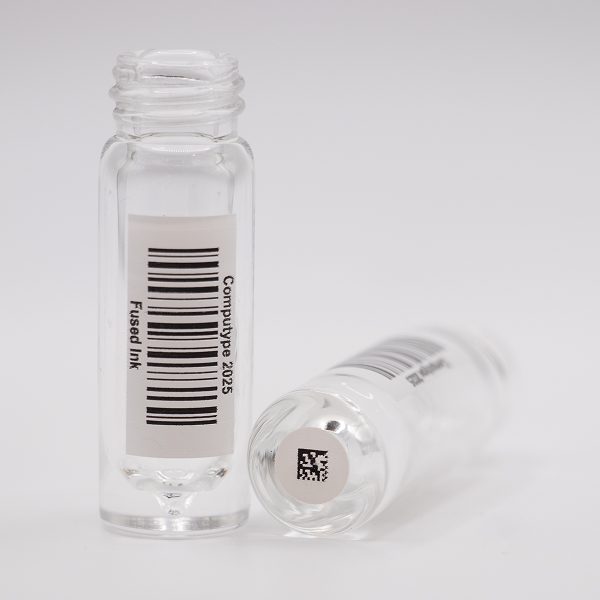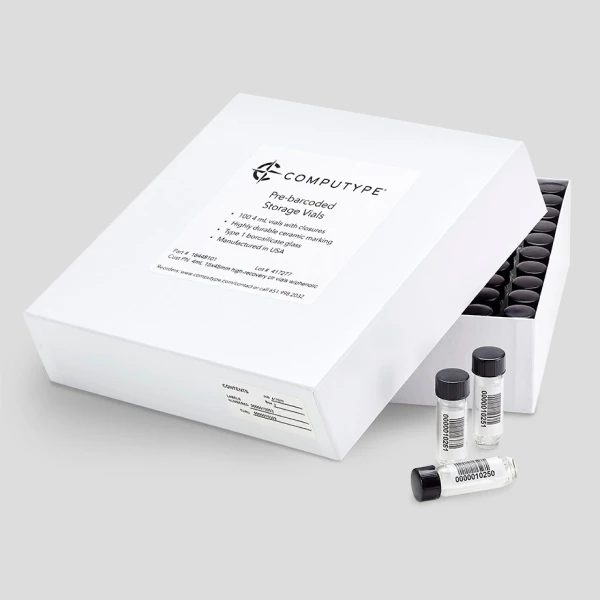A new ultra-high recovery vial is now available from Worldwide Glass Resources®, offering a refined solution for labs seeking the highest possible sample recovery. Building on the success of high recovery vials, this latest advancement continues the industry’s pursuit of precision by pushing the limits of vial design, engineering, and specialty glass production.
“This product is the result of continual improvement and pushing the limits of design, engineering, and production of specialty glass vials,” said a representative from Worldwide Glass Resources®.
With an interior geometry optimized to reduce residual volume, the ultra-high recovery vial allows for near-complete sample extraction—leaving behind as little as ~5µL. Compared to standard high recovery designs, this marks a 50% reduction in dead space, improving both efficiency and consistency in sample handling.
This new design is especially valuable in workflows where sample volume is limited, material costs are high, or accuracy is critical. From pharmaceutical development to analytical chemistry and forensic testing, the ability to recover more from each vial directly supports better outcomes.
Combined with clean, domestically sourced glass and options for pre-barcoding or custom vial marking, this offering represents a practical step forward for modern lab operations—without changing core workflows or equipment. It’s not a replacement for high recovery vials, but a new option for those who need to take recovery even further.

A step beyond high recovery.
High recovery vials have long helped laboratories reduce sample waste and improve consistency in small-volume workflows. Their tapered designs and smooth internal surfaces have made it possible to extract most of the sample using standard pipettes or autosamplers. The new ultra-high recovery vial builds on this foundation with a redesigned interior geometry that enables even greater precision—delivering up to 50% less dead space compared to high recovery formats.
This leap in performance is made possible through refinements in both form and manufacturing. The vial’s interior is engineered during production to guide liquid into a sharply defined collection point. This makes it easier for autosampler needles or manual pipettes to access nearly all of the remaining volume, even at micro-liter scales. In testing, the residual volume left behind has been consistently measured at approximately 5µL—a significant improvement over the 10–20µL or more that is typical with conventional high recovery vials.
Importantly, this improvement does not require new handling methods or specialized equipment. The vial is fully compatible with standard lab workflows, allowing teams to take advantage of higher recovery rates without disrupting established processes. For labs working with limited sample sizes or expensive reagents, this can translate into better data integrity and more efficient use of resources over time.
Beyond the improved recovery, the vial’s material composition plays a critical role in maintaining sample quality. Each vial is made from domestically sourced glass, chosen for its consistency, cleanliness, and compatibility with sensitive applications. This helps reduce the risk of contamination and supports workflows where purity and repeatability are essential.
Taken together, these design enhancements make the ultra-high recovery vial more than just a slight upgrade—it’s a purpose-built tool for workflows that demand the highest level of precision. Whether you’re working with volatile compounds, trace materials, or high-value substances, the ability to recover more sample from each vial can help you meet tight tolerances and regulatory expectations while supporting long-term efficiency.
This is not about replacing existing tools, but about offering new options where they matter most. For labs operating at the edge of analytical sensitivity or sample scarcity, a small reduction in residual volume can add up to a measurable impact.
Who should be paying attention?
Ultra-high recovery vials aren’t necessary for every lab—but for some, they can make a measurable difference. If your work involves limited, sensitive, or high-value samples, this design offers an opportunity to capture more of what matters, without changing your current processes.
One of the clearest fits is in pharmaceutical compound libraries, where thousands of small-volume samples must be stored, tracked, and reused over time. When only a few microliters of a compound are available, improving recovery from each vial helps preserve inventory and reduce reordering or reformulation. Even small gains in volume retention can have cumulative value across a library.
Purification workflows also stand to benefit. In early-stage pharmaceutical development or analytical chemistry, purity and yield are closely linked. Recovering more sample means fewer repeats and more accurate downstream analysis—whether you’re isolating active ingredients or preparing samples for mass spectrometry.
In forensic laboratories, materials are often limited not by cost but by availability. A single evidence sample might be all that exists, and every drop must be preserved for analysis, reporting, and potential legal review. An ultra-high recovery design helps maximize the usable portion of a sample without compromising integrity.
Even less obvious industries, like fragrance development, deal with expensive, limited-supply ingredients that must be handled in microliter quantities. Recovering more from every vial helps reduce waste and control costs, especially during formulation and testing phases.
The common thread across all these applications is simple: when it’s critical to retrieve as much of the sample as possible, a higher-performing vial adds value. This isn’t about lab size or specialization—it’s about the nature of the material and the precision of the work.
Labs operating under tight regulatory requirements, working with ultra-low concentrations, or managing high-throughput sample libraries are all candidates to benefit. Even routine workflows can see improved consistency and reduced material usage with better recovery.
The ultra-high recovery vial isn’t about changing how you work—it’s about giving you more of what you already have, with no added effort.

Clean, custom, and ready to work.
The ultra-high recovery vial from Worldwide Glass Resources® is a precisely engineered product—but its value doesn’t stop at the glass. Through advanced marking and cleanroom processing, we help ensure that each vial arrives fully prepared for immediate integration into your lab’s workflow—labeled, traceable, and compliant with your cleanliness standards.
Our team uses a range of specialty marking technologies to barcode or custom-mark labware, depending on your needs. These include baked and cured inks for long-lasting durability, ceramic-bonded labeling solutions for permanent identification, and options for standard or custom color schemes to support sorting, grouping, or process staging.
Whether you’re managing a compound library that requires serialized barcodes or a research workflow that depends on custom identifiers, we can apply clean, high-contrast markings directly to the vial or label. This helps eliminate manual labeling steps, supports automation, and reduces the risk of errors or label misalignment.
Behind the scenes, this work is supported by our controlled cleanroom environment, where we handle and mark vials under strict protocols to limit bioburden and preserve the cleanliness of the product. This is especially critical for labs working with sensitive biological or pharmaceutical materials, where even minor contamination can compromise results.
Because the ultra-high recovery vial is compatible with common lab hardware—racks, caps, and autosamplers—your pre-barcoded or custom-marked vials arrive ready for use. There’s no need to unpack and relabel, no added prep work, and no risk of disrupting downstream workflows.
In other words, Worldwide Glass Resources® provides the innovation in glass and geometry—and we help extend that innovation to your bench. By combining optimized vial design with high-integrity barcoding and clean handling, you get a turnkey solution built for traceability, recovery, and reliability.
It’s not just about getting a better vial. It’s about getting a vial that’s already integrated into your process, from the moment it arrives.
The ultra-high recovery vial represents a thoughtful step forward in sample handling—refining what already works and pushing it further. With improved geometry, dramatically reduced dead space, and compatibility with existing lab equipment, it’s a smart upgrade for labs that operate with precision and care. Whether you’re working with small-volume compounds, rare materials, or critical workflows, this vial helps you recover more without adding complexity.
Combined with custom barcoding, color marking, and cleanroom handling, it’s more than just a vial—it’s a tool ready for your process the moment it arrives. From research to production, analytical chemistry to compound management, this is a simple way to take control of your sample recovery and traceability.
Interested in trying it for yourself?
You can request a pre-marked sample of the ultra-high recovery vial—barcoded and ready to drop into your workflow.
Connect with our labelling experts today
Blog article form
"*" indicates required fields
